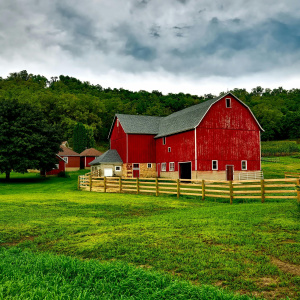
This report by the Institute of Agriculture and Trade Policy examines the strategies of 14 meat and dairy companies and four agricultural input companies focusing on the potential to deliver genuine emissions reductions and the support provided to farmers. It claims that farmers’ needs and concerns are often overlooked in the analysis of agribusiness climate plans.
Publisher’s Summary
This report examines the strategies of 14 meat and dairy companies and four agricultural input companies supplying fertilizer, pesticides, seeds and feed, focusing on two elements: the potential to deliver genuine emissions reductions and the support provided to farmers to make this transition happen. While not exhaustive, this selection offers a cross-section of industry practices. Farmers will be the ones implementing most of the measures needed to cut emissions. Yet their needs and concerns are often overlooked in the analysis of agribusiness climate plans, a gap which this report seeks to remedy.
Our analysis found that:
- Meat and dairy companies are increasingly focusing on climate action within their supply chains, but the closeness of their relationship with their suppliers varies. This opens up the possibility that the same on-farm GHG emission reductions are claimed by multiple companies or that actors at different points in the value chain co-claim the same reductions, leading to an overall reduction in ambition.
- While most companies work to some extent with their known direct suppliers, strategies go beyond their supply chain and even their supply shed, blurring the lines with discredited approaches of offsetting corporate pollution with actions taken by others.
- Agricultural input companies are positioning themselves as connectors between farmers and more consumer-facing companies to generate carbon credits; at best, they co-claim the benefits of climate action.
- Agribusinesses are not undertaking the transformational measures needed to reorient their business practices to work within planetary boundaries. Most livestock companies focus on technological fixes with questionable mitigation potential, including feed additives and biogas. These technologies maintain, rather than challenge, industrial livestock rearing.
- Livestock companies and agricultural input companies rely on carbon sequestration in soil and grasslands to reduce the pressure to cut their ongoing emissions, despite the fact that carbon sequestration cannot replace emission reductions.
- Incentive schemes for farmers vary widely in relation to conditions for payments and their comprehensiveness but it is questionable if they will provide the level needed to support the transition.
- Activity-based sustainability premiums models appear to provide more stable support to farmers compared to the other most common approach, results-based payments for carbon credits, though the lack of information hampered the analysis.
- The increase in on-farm data collection raises concerns about further increasing farmers’ dependencies on agribusiness, existing power imbalances, and potential conflicts of interest between as agribusinesses’ build schemes tied to their products.
To achieve a transformation of the agriculture sector and our food system, all stakeholders need to contribute, especially the companies that hold significant power in shaping the system. However, even though some frontrunner companies are implementing new strategies, they are unlikely to drive change at the speed and scale needed.
As governments develop their next set of climate targets, specific targets to achieve absolute emission reductions should be considered for the agricultural sector with a suite of policy measures designed and implemented to ensure these are met. As governments continue to hold corporations accountable for their emissions, it is important to be mindful of how that push trickles down to the farm level and what kind of protection systems for farmers might be necessary.
The transition to a different food and agriculture system is inevitable, but whether the transition will be just and well-managed is not. The challenge lies in creating systems that respect planetary boundaries while ensuring fair livelihoods for farmers and workers.
Reference
Read more here. See also the TABLE explainer, Meat, metrics and mindsets: Exploring debates on the role of livestock and alternatives in diets and farming







Post a new comment »